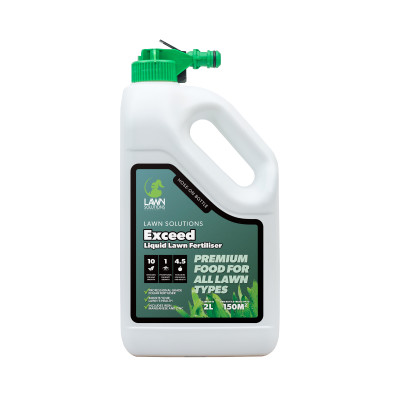Buffalo Grass Research and Development
Lawn Solutions Australia (LSA) is strongly committed to the development of superior varieties of turf for the Australian landscape. Our Research and Development program now includes over 30,000 different cultivars of turf that we are constantly evaluating in the hope of finding a new variety that has a list of benefits for Australian consumers.
Together with our international turf breeding partners, we monitor new varieties for environmental benefits, water use, shade tolerance, drought tolerance, growing speeds and other aesthetic, environmental and practical factors. We continue to work closely with our exclusive international breeding partners The University of Georgia, BladeRunner Farms and Texas A&M University to make all this possible.
LSA has been working with Dr Ambika Chandra from Texas A&M University on a new buffalo for the Australian market for many years. New turf varieties are not shelf-stock items and take many years of research, data collection, morphological testing and comparable trials in the US and Australia before, and if, they are released to the market.
Important criteria for a new buffalo turf variety included winter colour, shade tolerance, improved drought tolerance and temperature variation from -7 to 45 degrees. These factors are all considered when assessing and observing whether a new cultivar is going to exceed what is currently already available to the Australian market. In most cases however, they fail to deliver significant results and are removed from further testing.
Buffalo Grass Import
On Monday the 23rd of May 2022, 18 buffalo grass (Stenotaphrum secundatum) cultivars arrived in Australia. It took a lengthy 12-month process of initial discussions, protocols, sourcing permits and planning before the cultivars could make their journey, but the precious cargo finally landed in good health.
These cultivars bred out of the world’s leading Texas A&M University Turfgrass Program are the best of the best in newly developed buffalo grasses. This was an incredible milestone achievement for LSA which is exclusively partnered with the world’s best to bring these new grasses to Australia.
These outstanding grasses were then assessed in Post Entry Quarantine in Melbourne for the next 12 months. Once cleared, these buffalo grass cultivars were given to LSA for evaluation trials. This has been a massive investment for LSA and one that aimed to secure the pipeline for the ‘next big thing’ in buffalo grasses for Australia’s future.

These grasses have been assessed throughout Australia in various climates and conditions over the last two and a half years. Data was recorded throughout these trials, with current buffalo grasses in the market also included for comparison.
During trials and assessments, the buffalo grasses were narrowed, with factors like density, harvestability, colour, disease susceptibility and seedhead production used to find the best performers.
While cultivar performance varied across different sites, one consistently outperformed the rest, excelling in all key areas. It proved to be the best-performing cultivar during winter in some very cold and harsh environments, which is a crucial factor for many turf producers. Remarkably, this same cultivar remained unaffected by disease during the humid summer, whereas most other buffalo cultivars were impacted. Additionally, it boasted an impressive appearance and excellent harvest quality.
After 6 years of trials both here and in the US, LSA is pleased to announce we have selected a new buffalo grass for release to the Australian market – Introducing Stampede Hybrid Buffalo.

Stampede Hybrid Buffalo is an interploid hybrid St. Augustinegrass (buffalograss; Stenotaphrum secundatum (Walt.) Kuntze). It was developed using embryo rescue technology through controlled pairwise crossing between a polyploid buffalograss (chromosome number: 2n = 2x = 30) and a diploid buffalograss (chromosome number: 2n = 2x = 18).
The next step in releasing this new grass to the market has involved stock expansion. When a new variety enters Australia through quarantine, we receive only a few runners of plant material to expand from for testing.

This year, LSA has set up propagation facilities for planting stock to be available to LSA foundation farms to expand and make the grass available for each member for planting. All the grass material supplied to LSA Members throughout this process has been expanded from these few pieces of trial stock that came through quarantine in 2022.
LSA engaged the services of the Australian Genetic Assurance Program (AusGAP) to monitor and enact protocols to ensure the purity of this selected variety every step of the way. As you can imagine, the process of creating a supply of a new variety of grass is slow and tedious, but it is pertinent to ensure the purity of the grass so that it performs as it has throughout trials.



